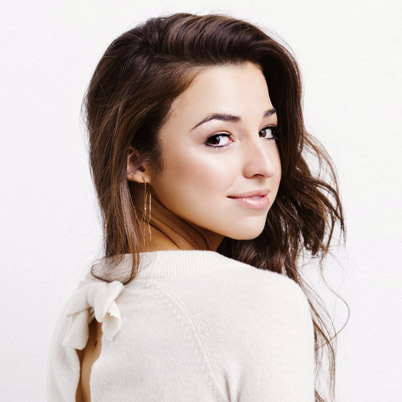Year: 1954-1967
The Concept: When Avon launched this iconic campaign during the post-WWII era, they became the first-ever beauty company to turn career-less housewives into door-to-door entrepreneurs.
The women in the posters and commercials were independent and put-together, wearing bright smiles, as well as tailored skirt suits and pillbox hats afforded by their sky-high Avon salaries. The idea was to create worldwide brand awareness, while encouraging women to embrace their independence during a time when such a thing was rare.
The Impact: Avon employed over 100,000 women across the world because of "Avon Calling." Even today, their signature outfits and tagline are unmistakable (albeit old-fashioned). The campaign was one of the longest lasting in advertising history, and the first-ever to associate financial independence with beauty.
Year: 1973
The Concept: Revlon released their Charlie fragrance in 1973, during a time when female empowerment and self-sufficiency were on the rise. The ads starring models Shelley Hack and Charly Stember were the first fragrance advertisements in history to feature women wearing pants. (We know, crazy town). Also a Charlie model was Naomi Sims, the first-ever African American woman to be featured in any cosmetics campaign. (Much crazier).
The Impact: Women worshipped the Charlie ads for their playful representations of female independence. And within the next few years, Charlie became the top-selling perfume in the world.
Though some people found the brand's advertising distasteful -- particularly one image of a female model patting a male model's bum (sounds cute to us!) -- the Charlie ads inspired a new generation of young, working females. Even Oprah Winfrey was quoted as saying she always wanted to be just as "confident and fabulous" as the "Charlie girls."
Year: 1997
The Concept: It would still be another seven years before Dove would release its massive "Real Beauty" campaign, so in many ways The Body Shop was ahead of its time. In 1997, the brand created Ruby, one of the first characters in advertising to represent "attainable ideals" for women.
Marina Galanti, responsible for The Body Shop's advertising and marketing at the time, told the New York Times, "The images in the barrage of advertising around you have very little to do with people riding the bus with you, sitting in the office with you, having dinner with you.... It's good to celebrate our points of difference. And Ruby does that."
The Impact: Ruby was accompanied by the following slogan: "There are three billion women who don't look like supermodels and only eight who do."
Body positivity was a new thing in beauty advertising, and in the late '90s, it was The Body Shop's way of differentiating itself. Though Ruby's image didn't become as iconic as Barbie's, it helped set a precedent for empowering campaigns to come.
Year: 2004
The Concept: It all started with a little research. According to Unilever Brand Director Jennifer Bremner, Dove conducted a global study in 2004, which showed that 81 percent of American women thought that "the media and advertising set an unrealistic standard of beauty."
This inspired the brand to launch what would become one of the decade's most recognizable ad campaigns. "We pioneered the use of attainable images of beauty," says Bremner, "showing girls as young as 10 and women as old as 95, women from a variety of ethnic and social backgrounds, as well as those with real curves."
Dove's debut billboard image of ten women -- all different sizes and ethnicities, each wearing nothing but a white bra and underwear -- would go on to circulate worldwide.
The Impact: "Real Beauty" was one of the first ad campaigns to be widely discussed on social media. Some controversy accompanied the campaign, including conflicts over retouching and whether female-empowerment messages should be used to shill products. But the reaction was overwhelmingly positive, landing Dove a decade of awards and praise for finally making real women's bodies visible.
"Dove is proud of the successes that we have had over the past ten years to reach women and impact the next generation," Bremner says, "and we applaud other brands for joining us to reshape the messages and images that women see."
Year: 2013
The Concept: Kotex launched their largely online "Generation Know" campaign to inspire girls "to come together to help dispel vaginal health and wellness myths, while creating a generation of girls comfortable asking questions," says U by Kotex Senior Brand Manager Melissa Dennis.
The brand launched a YouTube channel for the campaign, offering videos of straight-talking girls asking questions and slamming misconceptions about vaginal health. The videos address hush-hush topics from douching to period smell. (Hey, it's a thing).
The Impact: "Generation Know" was part of a larger trend that began in the early 2010s, backlashing against "traditional" feminine hygiene ads, which often feature smiley-faced women frolicking in fields and twirling in swimming pools. (Because we all definitely frolic during our time of the month).
Inviting women of different ages and backgrounds to speak honestly about this topic created a feeling of acceptance and inclusiveness that we rarely see in beauty ads.





